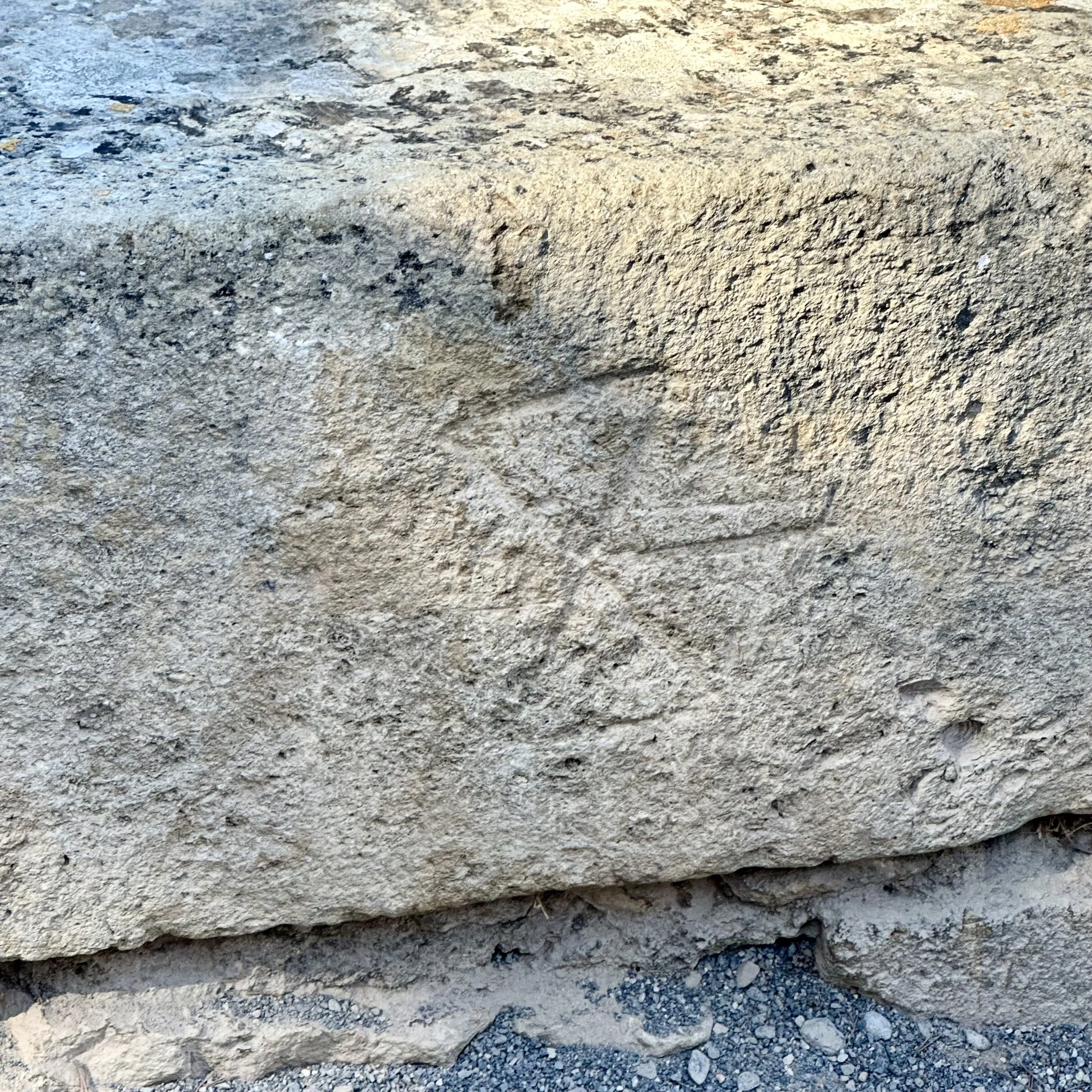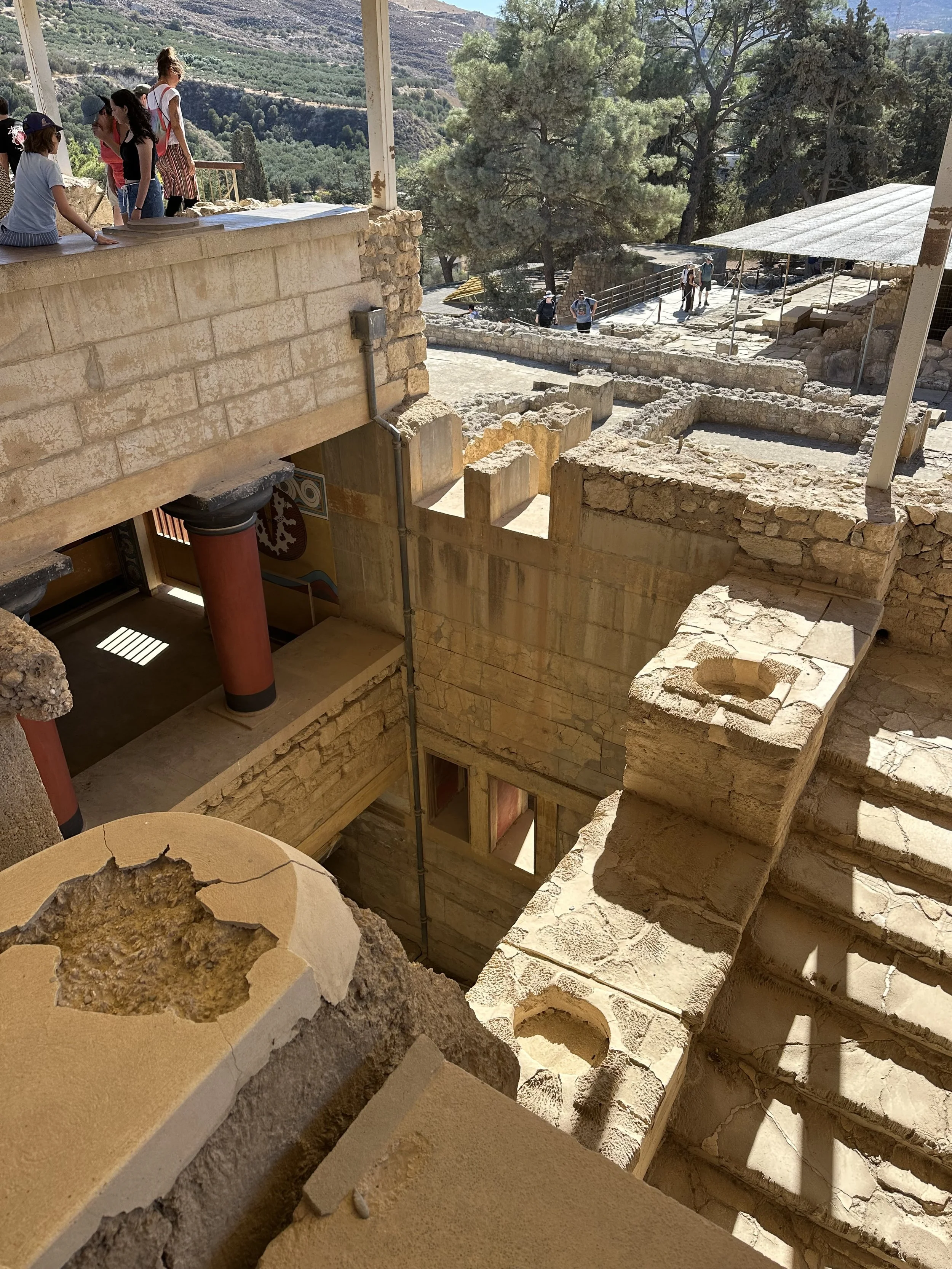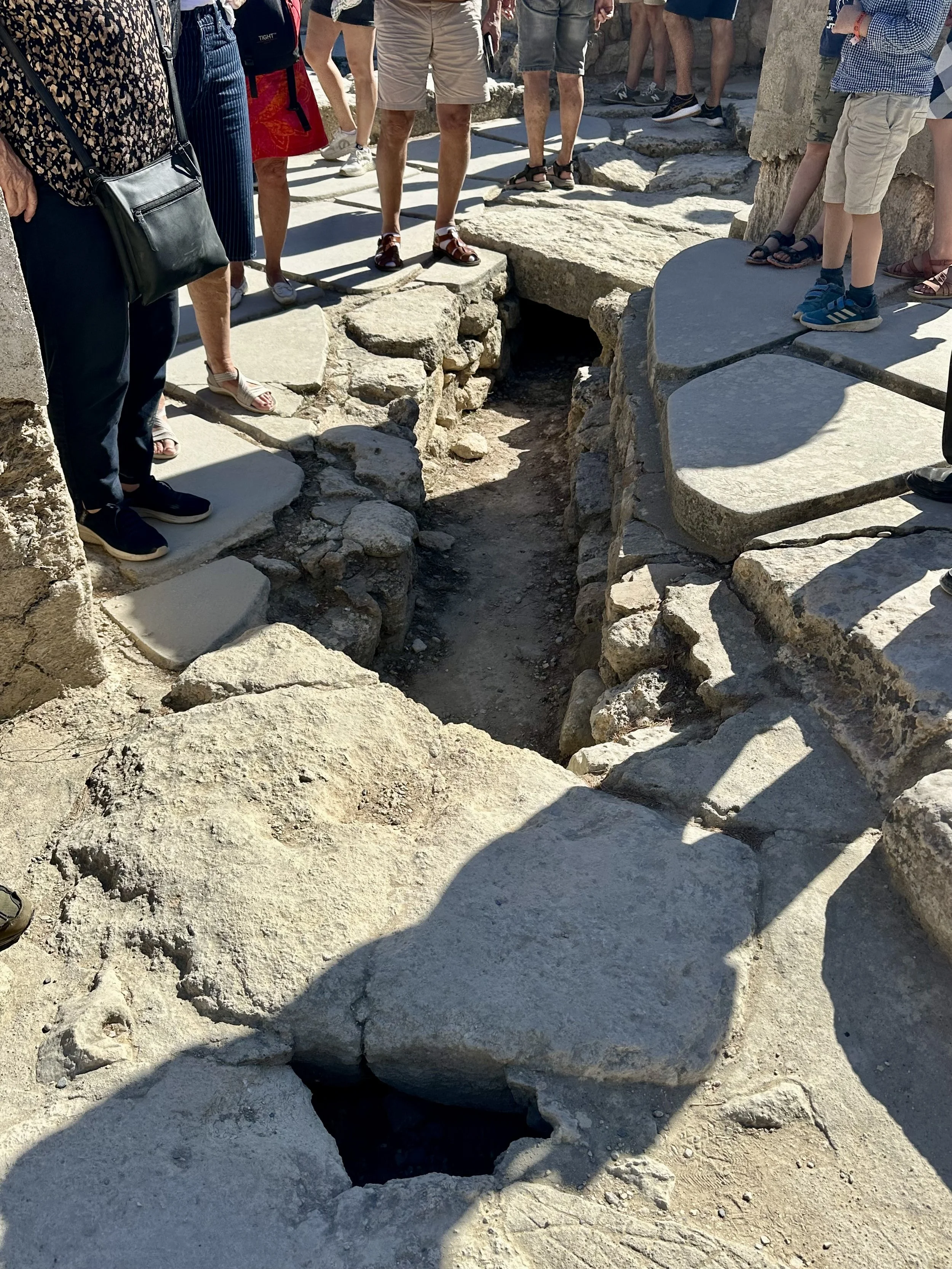Knossos
Knossos (kuh-NOSS-oss) was Europe’s first city and a major center of the Minoan civilization. The palace at Knossos was the home of the legendary King Minos, his famous labyrinth, and the minotaur. As with many ancient sites in Greece, it’s easier and more interesting to think of the history and the mythology together.
Our guide Mr. Manoulous told us the backstory of the Palace of Minos. It was constructed starting in 1900 BCE - nearly 4,000 years ago! Minos Kalokairinos, a Cretan merchant, discovered the ruins in 1877, but his excavations were stopped by the government, and his notes and plans were destroyed in a house fire. Arthur Evans, a British archaeologist, purchased the hill and the land around it, and excavated the site in 1900-1905. Evans made a controversial decision to restore the structures, using concrete to rebuild columns, walls, staircases, and other features. Mr. Manoulous showed us a symbol carved into a nearby stone: the Minoan double ax, called a “labrys.” The Minoans may have used the two-bladed axe for the religious sacrifice of bulls. Many believe that King Minos used the labrys throughout the palace as a symbol of his power, and that the word “labyrinth” derived from it.
We walked through the site, which was huge. The palace complex covered six acres and had around 1,300 rooms! Some say that the palace itself was the labyrinth. The restored portions enabled us to appreciate the palace’s height (three to four stories) and the Minoan decorative style. Greek columns taper upward to make them appear taller, but the Minoan columns taper downward. They were made from the trunks of cypress trees, and were placed upside down to prevent them from sprouting. The restored frescoes depicted figures with identical clothing and body shapes; only the skin color distinguished male (red) from female (white).
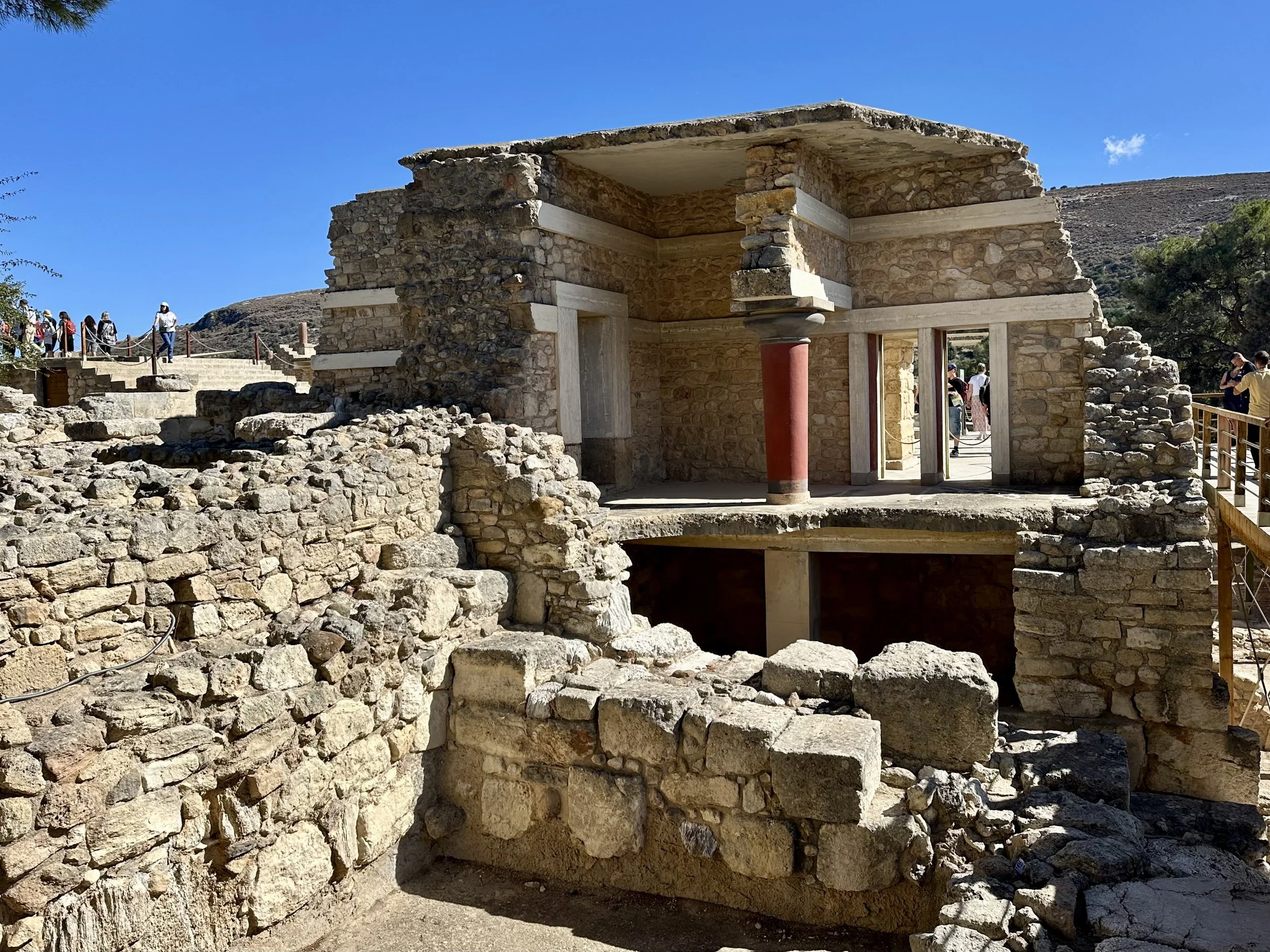

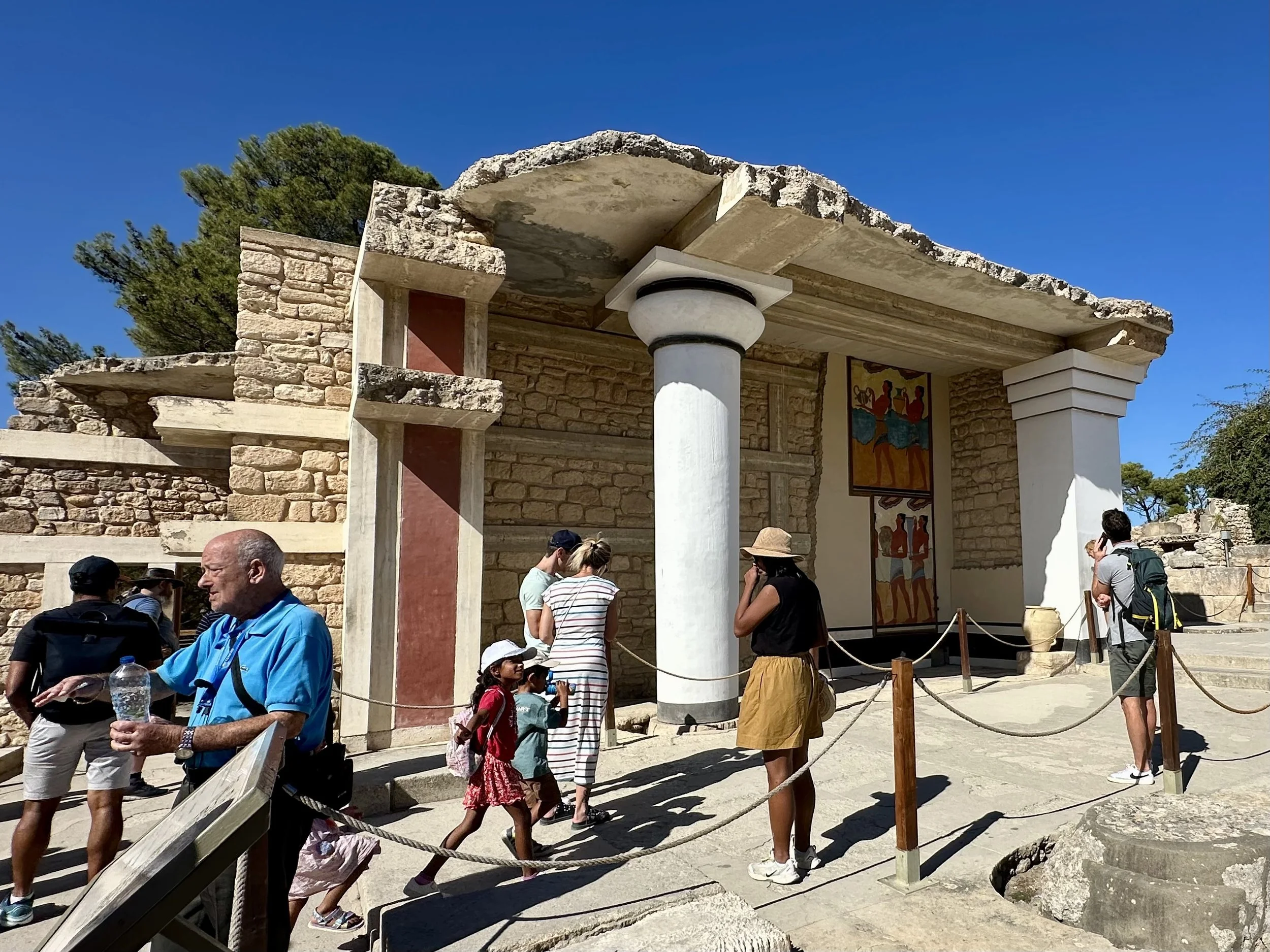
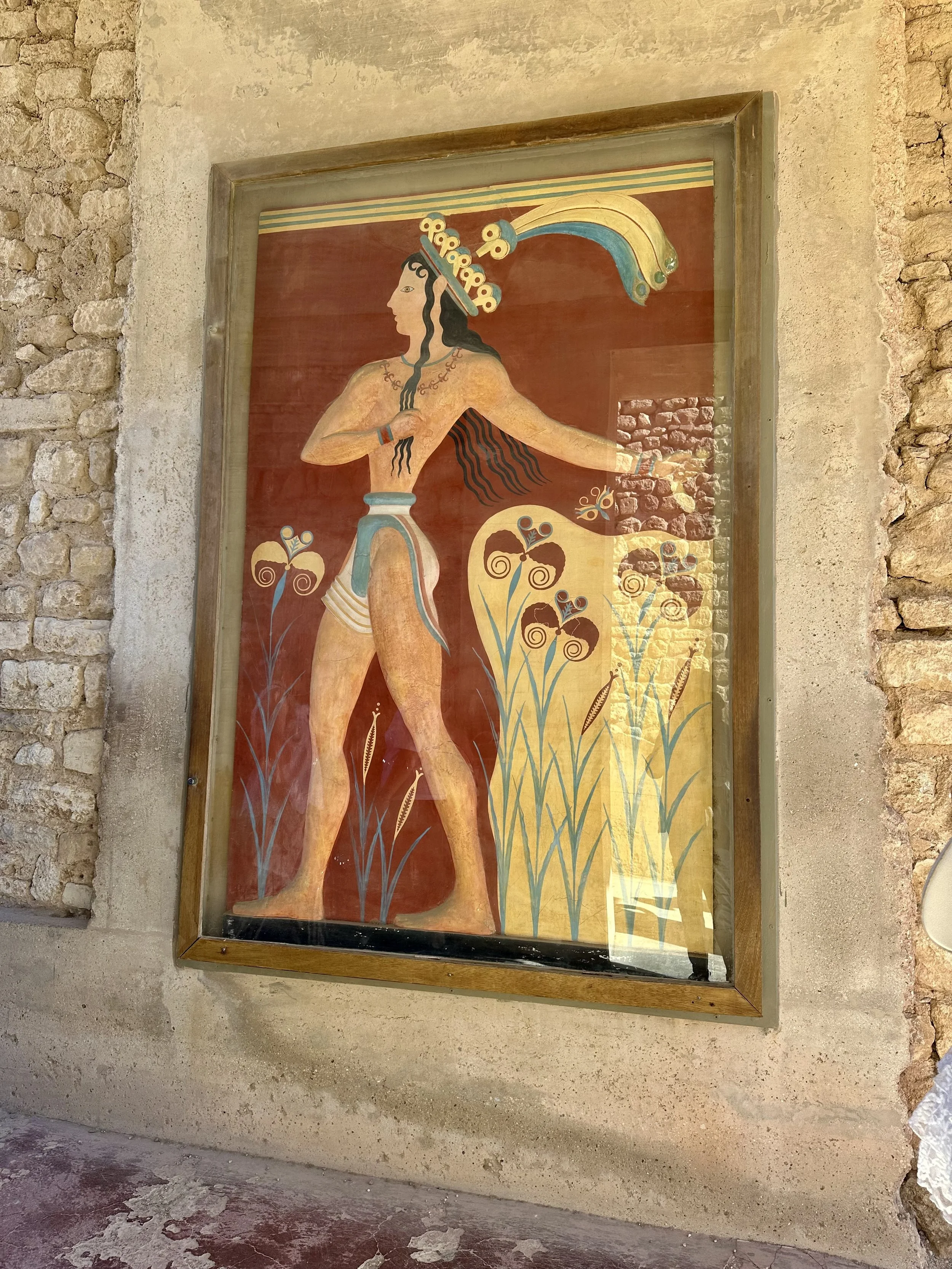
In several places we saw enormous clay jars called pithoi that were original artifacts, not replicas. They were used for storing food and tableware.
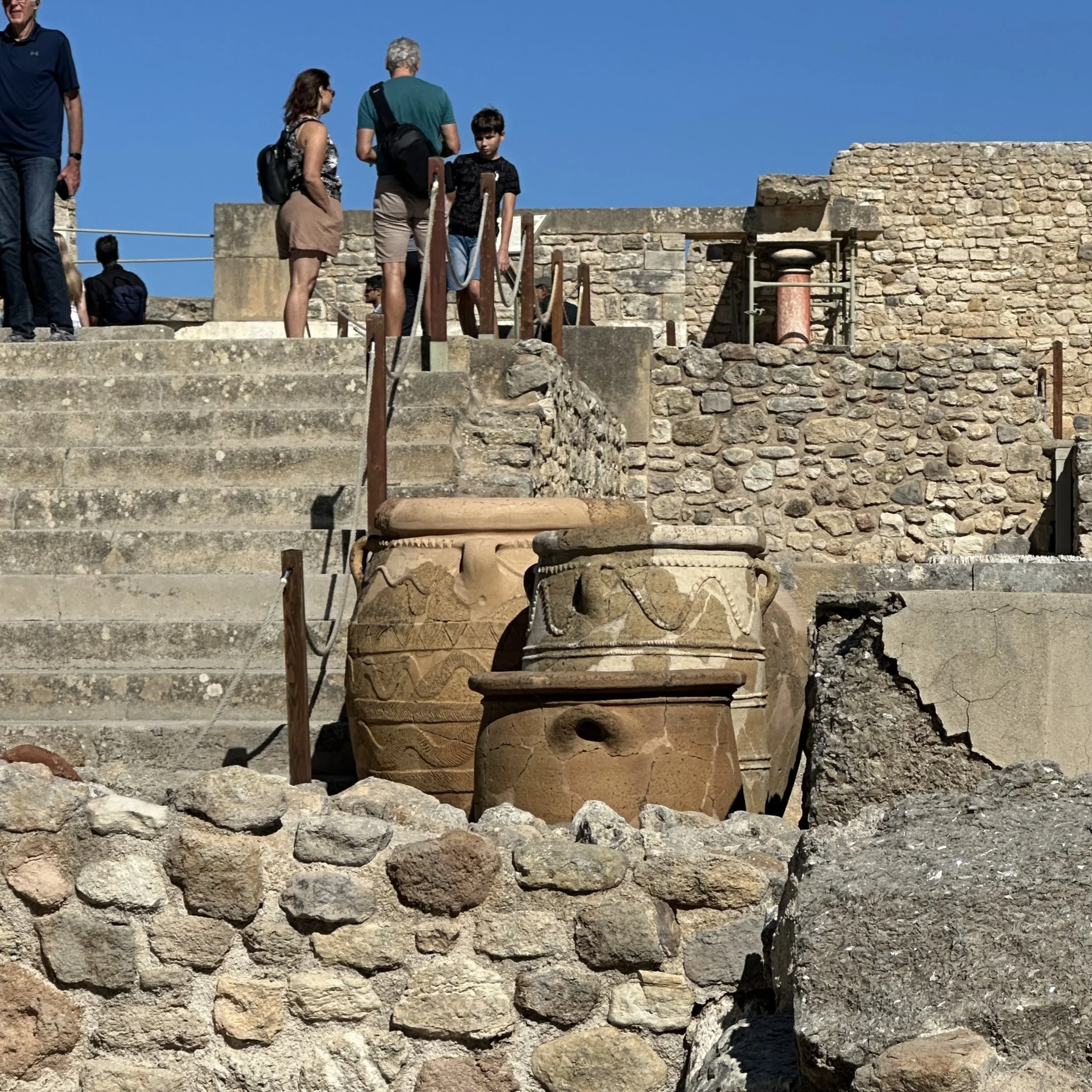
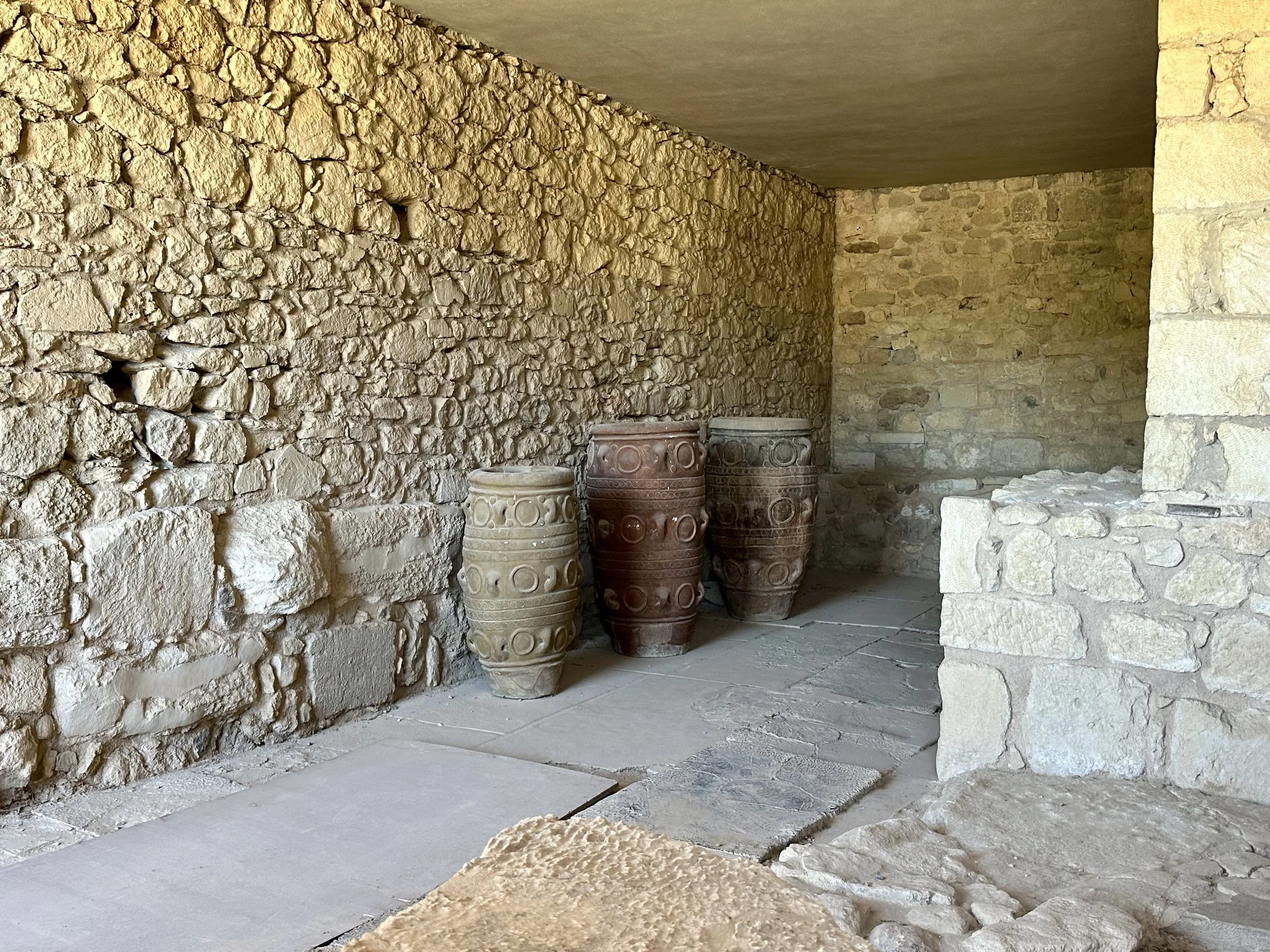
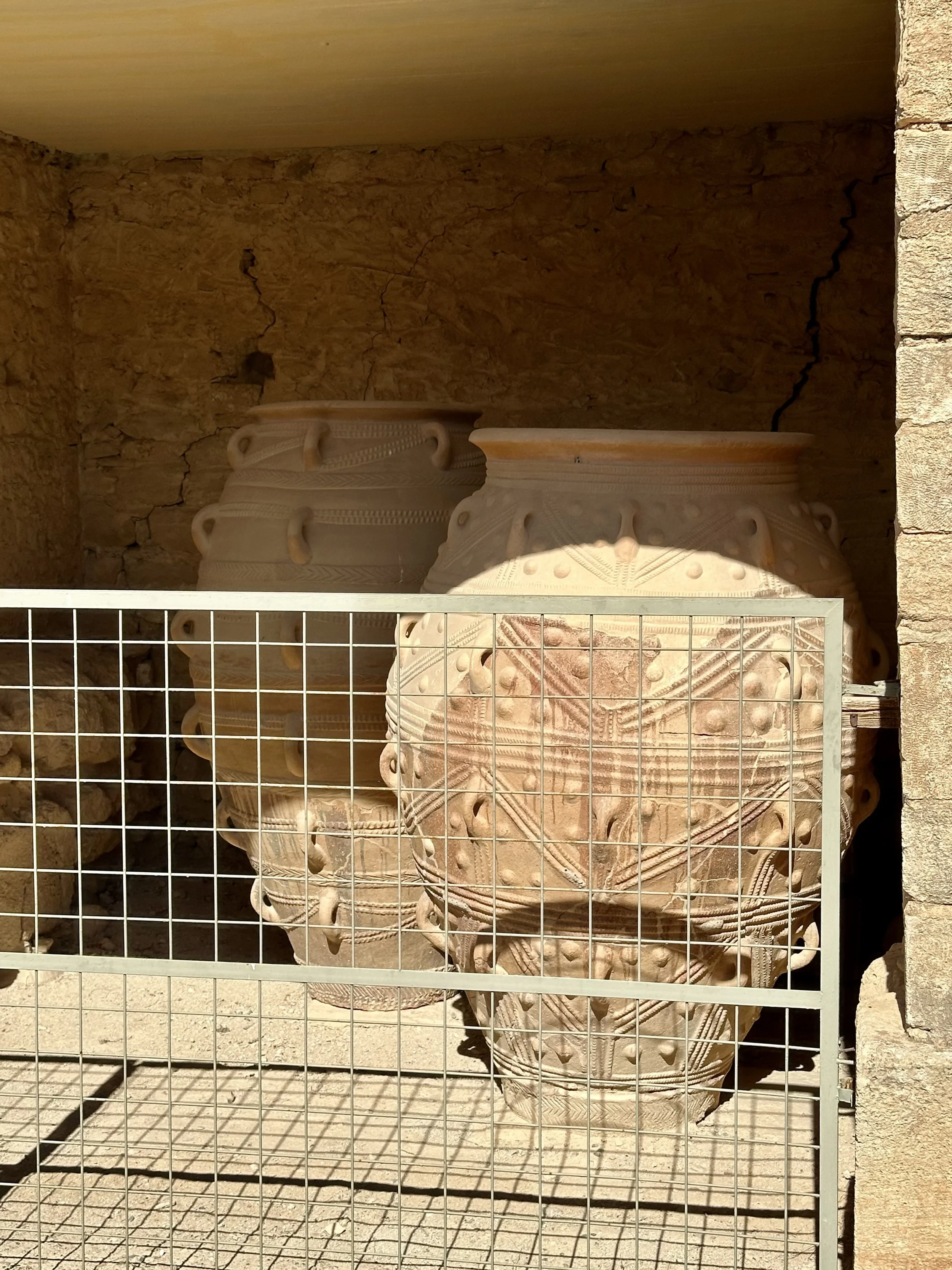
The building technology at the Palace of Minos was surprisingly advanced. Wooden columns, doorways, and wall frrames made the structures more flexible and earthquake-resistant. Strategically placed air shafts provided light and cooling ventilation. Fresh water from nearby springs arrived via aqueducts and was distributed through the palace using terra cotta pipes under the floor. A separate system of pipes carried sewage away. The queen’s chambers even had a seat over a drain - the first flushing toilet!
In the Throne Room, the restored frescoes covering the walls featured huge griffins - mythical creatures with the head of an eagle, the body of a lion, and the tail of a snake. The throne was the original, made from alabaster. Was this where King Minos sat and ruled Knossos?
We ended our tour at the theater, below the palace’s North Entrance and its fresco with a charging bull. Here we could walk on a short section of the ancient Minoan Royal Road, the oldest paved road in Europe. Legend has it that King Minos would walk this road to a sacred cave to speak with his father, Zeus.

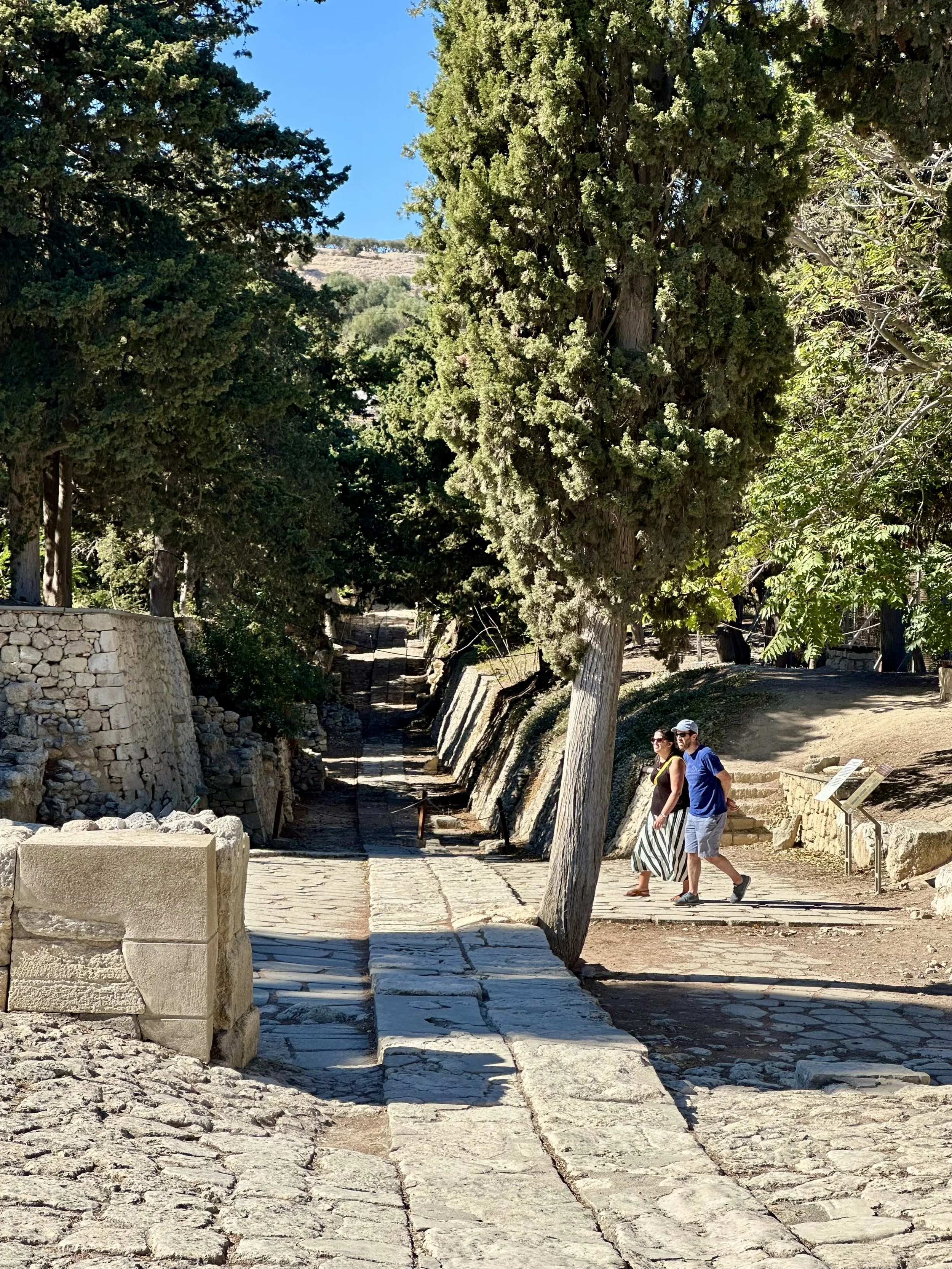
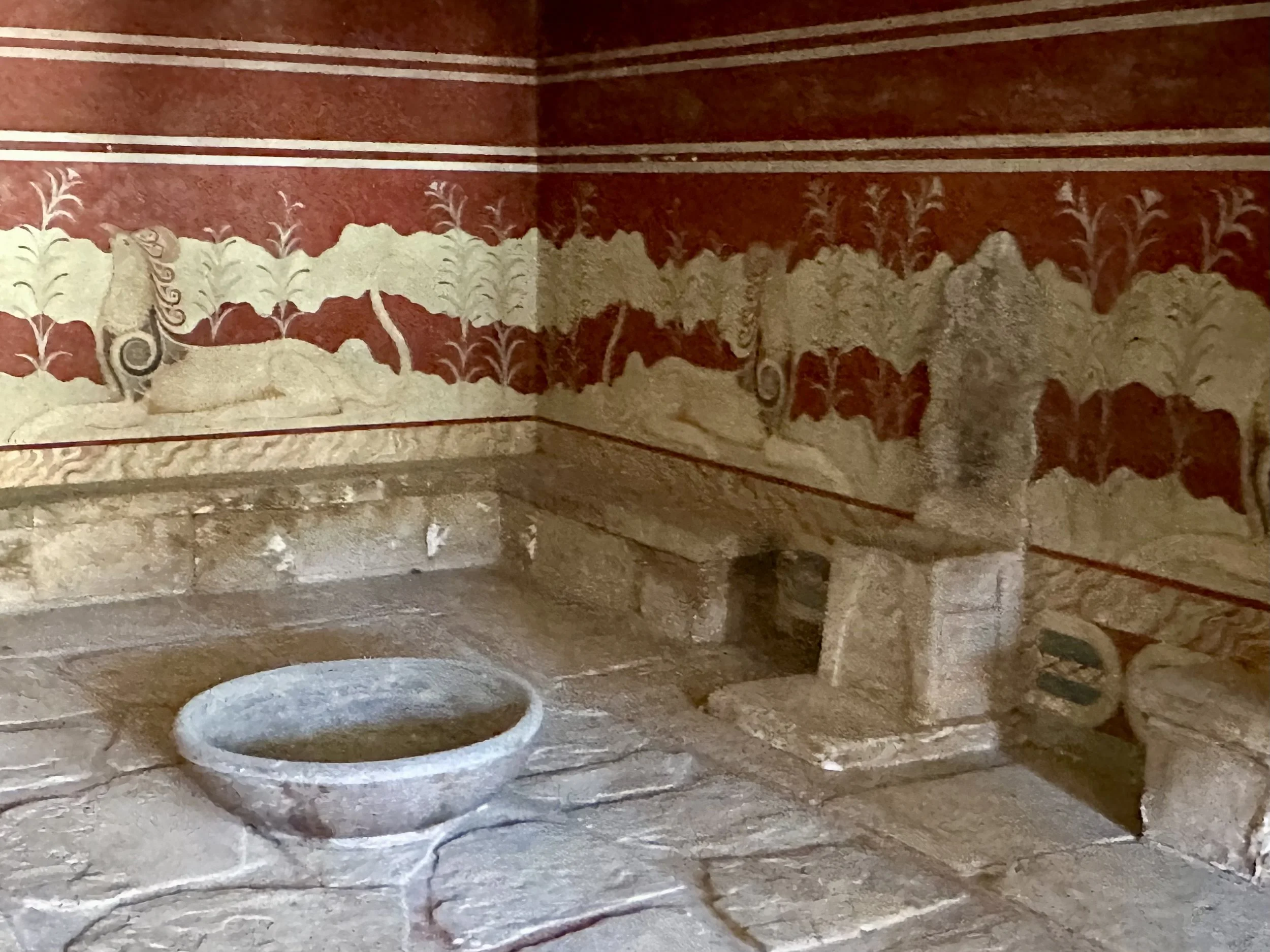
Did Arthur Evans do the right thing, restoring the Palace of Minos in such an irreversible way? Were his reconstructions historically accurate? If he hadn’t made the decision to restore, it’s likely that the Palace of Minos would have disintegrated long ago. It is intriguing to ponder whether Evans deserves credit or blame. I felt mostly grateful that we could see and be inspired by the art, architecture, and technology that was created four millennia ago.
The Palace of Minos at Knossos was designated a UNESCO World Heritage Site just this year, along with Kydonia in Chania and a few other Minoan sites on Crete.
